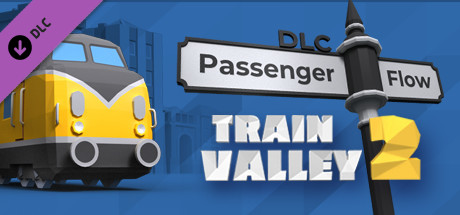A half-step back towards the formula of the original, Train Valley seems a little confused about what it seeks to be.
Type: Single-player
Genre: Management, Strategy
Developer: Alexey Davydov,
Sergey Dvoynikov,
Timofey Shargorodskiy
Publisher: Flazm
Release date: 3 October, 2019


Intro
Perhaps the most obvious sign that the developers of Train Valley recognize they have a problem is that the first line of the DLC’s store page promises to bring back some of the gameplay elements of Train Valley 1 into Train Valley 2. If everyone was happy with the changes, that wouldn’t have been the selling point, now would it have been?
While the throwback elements of Train Valley 1 are enjoyable on their own, and in a sense, the second game has solved some of the more annoying lack of sanity checks on the randomness of the original game, the differences of the first and second games mean that the gameplay is on some fundamental level not quite compatible. What we wind up with is two entirely different game systems that do not talk to each other, yet are forced onto the same rails, regardless.
Challenge in Train Valley
While it may be a little esoteric, I think the best way to discuss why two games that seem so similar on the surface can have people giving such different ratings is to start by talking about what aspects of these games people really enjoy.
There’s been plenty of talk in games media about difficulty and its role in how much people will enjoy games, so I’ll start off by saying that “hard games” that exist purely as games meant to be enjoyed purely because they are hard (think Getting Over It, which deliberately had no production values so that there was nothing to the game but challenge) are perfectly legitimate ways to make enjoyable games, yet at the same time, games do not need to be challenging in any way to be legitimate and enjoyable. A game like Train Simulator, where you simply keep a train going forward while you enjoy the scenery or walk up and down a simulated train’s interior may be something for very particular tastes, but it is delivering a very relaxing experience to those who truly just love trains.
The problem with Train Valley 2 is that it exists in that in-between world of not being built for challenge and being what should be that much more relaxing form of experience like a Train Simulator, but winds up forcing that challenge into the game, regardless.
Train Valley 1 had procedural trains needing to go to randomized destinations, forcing players to adapt on the fly to changing conditions, which meant that gameplay was about adapting to changing conditions in the moment, so its focus upon challenge to cram as much traffic onto overloaded lines as possible aligned in gameplay terms to make a challenge-focused game. Every decision is a decision made in the moment, as you feel the pressure to manage trains and make money and yet relieve that pressure constantly with every train successfully delivered. It’s a tight and constant gameplay loop.
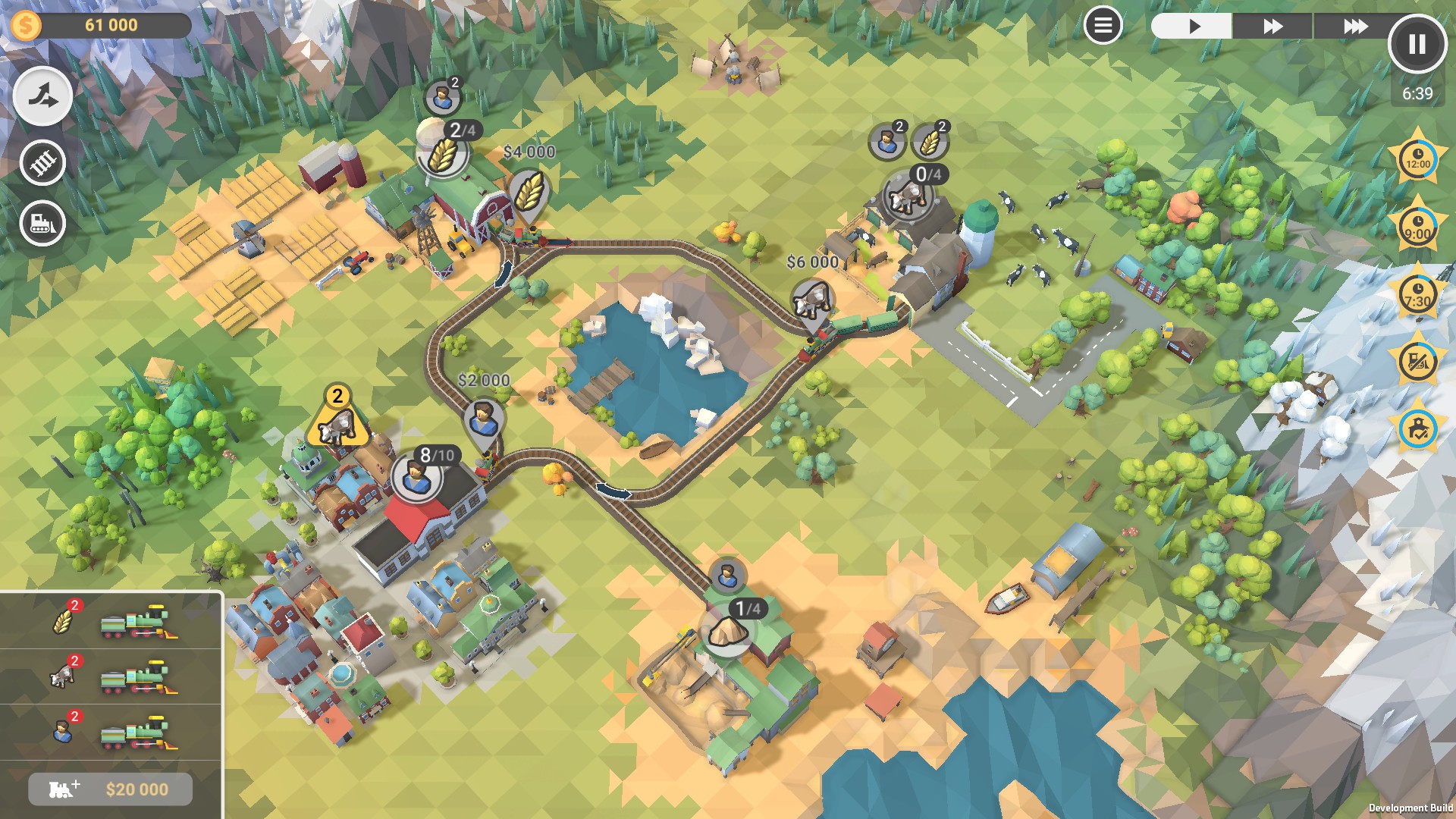
Train Valley 2, meanwhile, has gameplay focused around pre-set supply lines. The first mission has you deliver workers to both a woodcutter and a sawmill and then delivering raw logs from the woodcutter to the sawmill, and finally finished planks back to the town that delivered the workers to win. The number of planks needed to win is pre-set, and every single delivery you make is not only pre-ordained, it is perfectly obvious to the player what they must do and in what order. This means that you can’t play at the moment, you don’t adapt to changing circumstances, it’s just a test of looking at the map, realizing what the plan must be, then spending 15 minutes executing the plan you already made long ago. (And that is to say nothing of having to restart because you forgot to change a switch or a gimmick function like a customs ran out of workers and karate-chopped a train in half.) This shifts it from a game of juggling the unexpected and makes it more like a game of being asked to solve basic four-function math problems on a strict time limit. There isn’t a true challenge except being able to perform at a consistent level without mistakes for an extended period of time.
More fundamentally, however, Train Valley 2 seemingly kicks out the frantic pace of Train Valley 1 for a more relaxing and methodical style of gameplay at the start, only to ruin that relaxation by then cramming in every single stress-building, challenge-driven judgment of your capacity to cram trains close to each other on tracks while avoiding collisions as possible. If I was disappointed in Train Valley 1 for not being a creativity toy even as I respected it for being a challenge-driven game, Train Valley 2 is a game which has no idea what it wants to be, and winds up having other mechanics undermine any attempt one mechanic attempts to make the game become. The game is so strict and tight with its money and building space that you have no freedom in creation, so you have to build exactly the tracks the map demands of you. The game is too slow-paced and methodical to be enjoyable as a challenge-driven experience. The game is too overloaded with challenges and strict limits that demand careful pre-planning to be a relaxation tool.
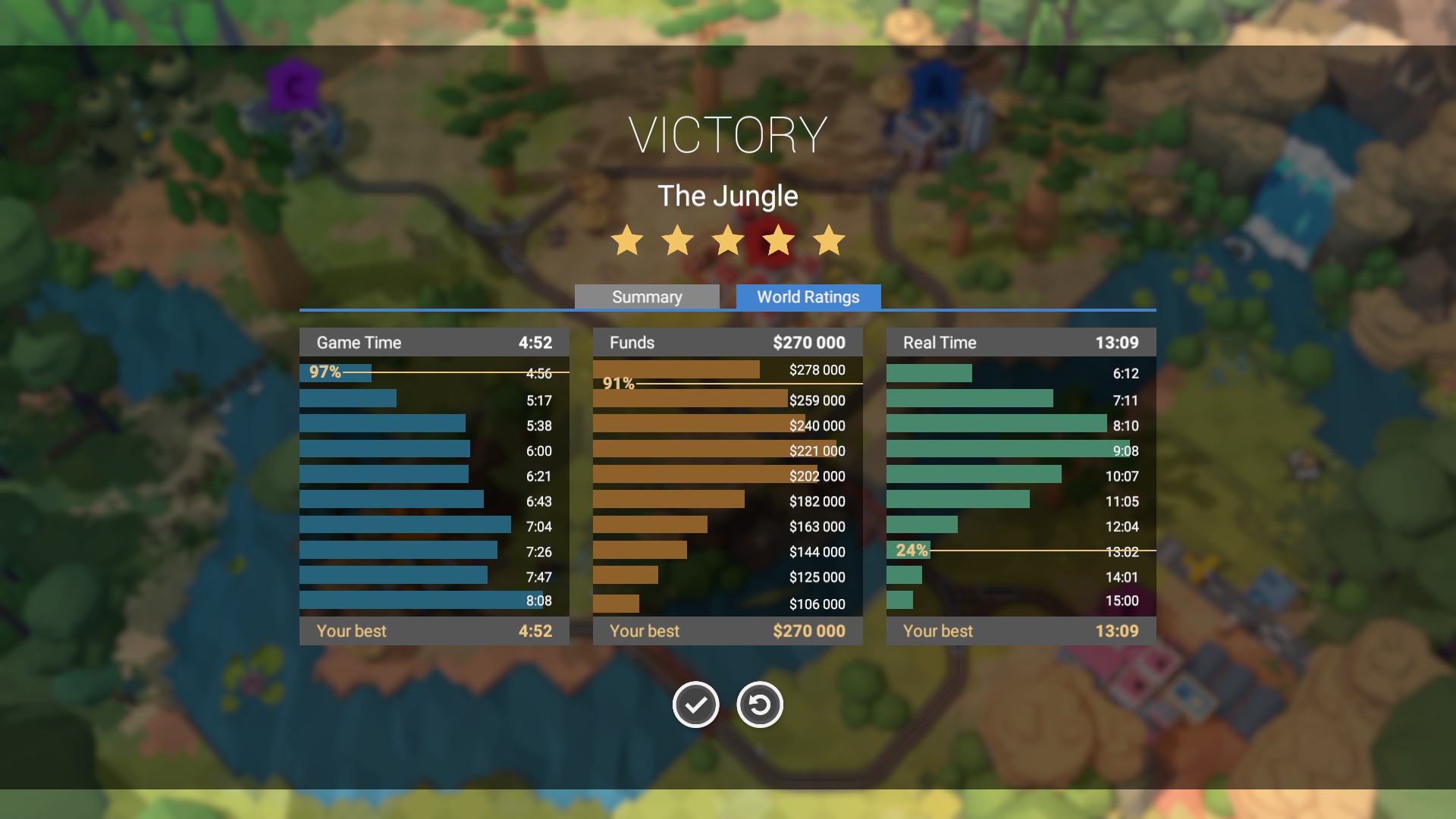
Worse still, Train Valley 2 introduces that epitome of all buzzkillers, global leaderboards! No longer can you merely feel like you have mastered a map just because you have five stars from having a good time and completing the arbitrary secondary objectives, you can do all that and still get told you’re in the zeroth percentile for real-time taken to complete a map because you dared to take a phone call or take a toilet break while the game’s implicit judgment of your actions was taking place. The three categories are game time to complete the level, which you already are judged upon for three of the five stars, so that’s not particularly dubious; funds remaining at the end of a level, which, in a game which doesn’t allow more deliveries than were ordered, or in other words, make more revenue than pre-ordained, essentially demands you cut expenses by building the least tracks and/or demolishing as little as possible, denying you the option to build additional “express” routes or alleviate dense traffic with extra tracks; and real-time to complete a level, which is an implicit punishment of pausing the game or playing at 1x speed just to minimize your game time. Inherently, each of these three goals conflicts with one another, essentially demanding that you play a mission you’ve already beaten at least two more times if you don’t like being in the twentieth percentile in one category or another, since you can generally only maximize for one criterion at a time. (Yes, your best score for each category can come from different playthroughs of the same mission, meaning that the best scores will always be from perfect runs made specifically to maximize that one score.) The one that truly exists just to annoy players, then, is naturally the real time to complete a level, which just implicitly exists to tell players that they are playing the game wrong if they stop to enjoy a swig of their beverage of choice while playing a game ostensibly for their own enjoyment. I will never understand why developers feel the need to throw gimmick “features” like global leaderboards that demand players do utterly asinine and unenjoyable things nobody would ever do otherwise, lest they be told they’re in eight millionth place, below a dead rat in the leaderboards. For people like me, who compulsively restart if I can’t get 5 stars in a mission, leaderboards exist just to tell you that you haven’t truly beaten a level until you’ve played it to absolute perfection taking extra practice runs to get serious enough about the game that it’s lost all enjoyability (to even tie for first place, you need to practice that specific map at least as much as anyone else in the world), and if you are the sort that merrily ignores the leaderboards, then there’s no difference to them being there or not.
What makes the leaderboards so emblematic of what’s wrong with Train Valley 2, however, is that leaderboards only make sense in score-focused (and therefore, challenge-focused) gameplay. Train Valley 2 represented a step back away from that kind of challenge focus in its game mechanics towards a more relaxing game, but the developers just didn’t understand how to let that kind of gameplay go. It’s a non-challenge game with leaderboards demanding you take all the ostensibly optional challenges oozing out of every crack. It’s not a game that can offer you a laid-back, non-challenging experience where you relax because it constantly demands you race it, but it’s a game that also took out all the overt challenges. It’s a game that manages to turn away audiences for either kind of game, making nobody truly happy.
The shortest route between station A and station B
Put simply, the Passenger Flow DLC adds 20 new levels to the 50 levels with which the base Train Valley 2 came. It also expands the level editor with the new mechanics that the DLC brings, technically expanding the number of iterations of the same map infinitely, however, one of the key things that left a favorable impression of Train Valley 1 was that there was a finite amount of time it could be enjoyed, and Train Valley 1 didn’t overstay its welcome. I didn’t find myself finishing the base game of Train Valley 2 (playing for myself, not being pressed to for review purposes), so I never felt a desire to dig up hundreds more maps which use the exact same mechanics while having no quality control. The editor is probably best used as the creativity toy that Train Valley isn’t, since it’s the one area you can actually lay down train tracks however your heart desires at a peaceful pace without the game’s pestering insistence everything be a challenge-driven race.
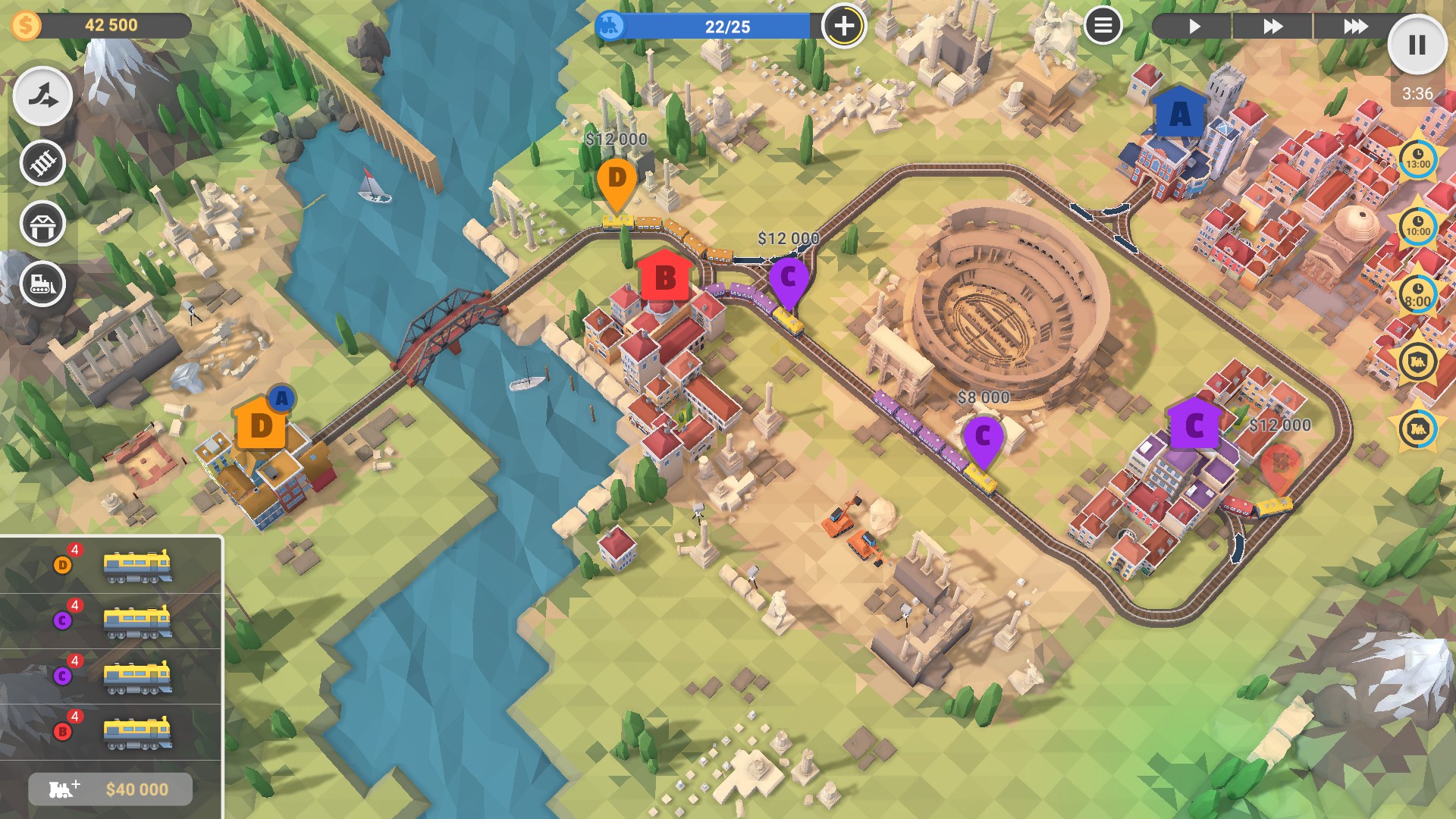
The first couple levels of the DLC seem to be a reprise of Train Valley 1 (with color blindness mode on, such that stations are identified by letter rather than picture) at first blush; You have several color-coded stations and color-coded trains that spawn to go to their destination. Unlike the first game, the color-coded trains have a less random cash value, and do not drop in value over time. Additionally, with Train Valley 2’s change from each level taking a certain period of game time to a “you play as long as it takes to complete the objectives” approach, you need to do something like deliver specifically 25 of the color-coded trains, with summoning new trains faster than they would spawn naturally now being free. Hypothetically, this means that it manages to retain the basic elements of the first game while maintaining the more relaxed pace of Train Valley 2, but things don’t work out that way. Playing in the style encouraged by the mechanics of Train Valley 1 leads to poor outcomes in Train Valley 2’s DLC, because you no longer are pushed to summon trains by having the ability to get more money through delivering more trains. Building extra tracks to have more capacity, then, is a losing strategy in Train Valley 2, even in the few maps where it’s even possible.
Worse still, while most of the problems associated with procedural content that bears no sanity checks are gone with the lowered amount of randomness, the DLC still manages to have pre-set starting cash values while randomizing which stations you need to connect at the start. It’s entirely possible to start with stations so far apart it’s literally impossible to connect them with your starting cash, forcing resets until you don’t start a map with Station D spawned, since that one is further away (and hence more costly to connect) than other stations. Since avoiding these problems were seemingly the point of most of the changes to Train Valley 2, I can’t understand why they didn’t fix such basic problems and add basic sanity checks to their few remaining instances of procedural content.
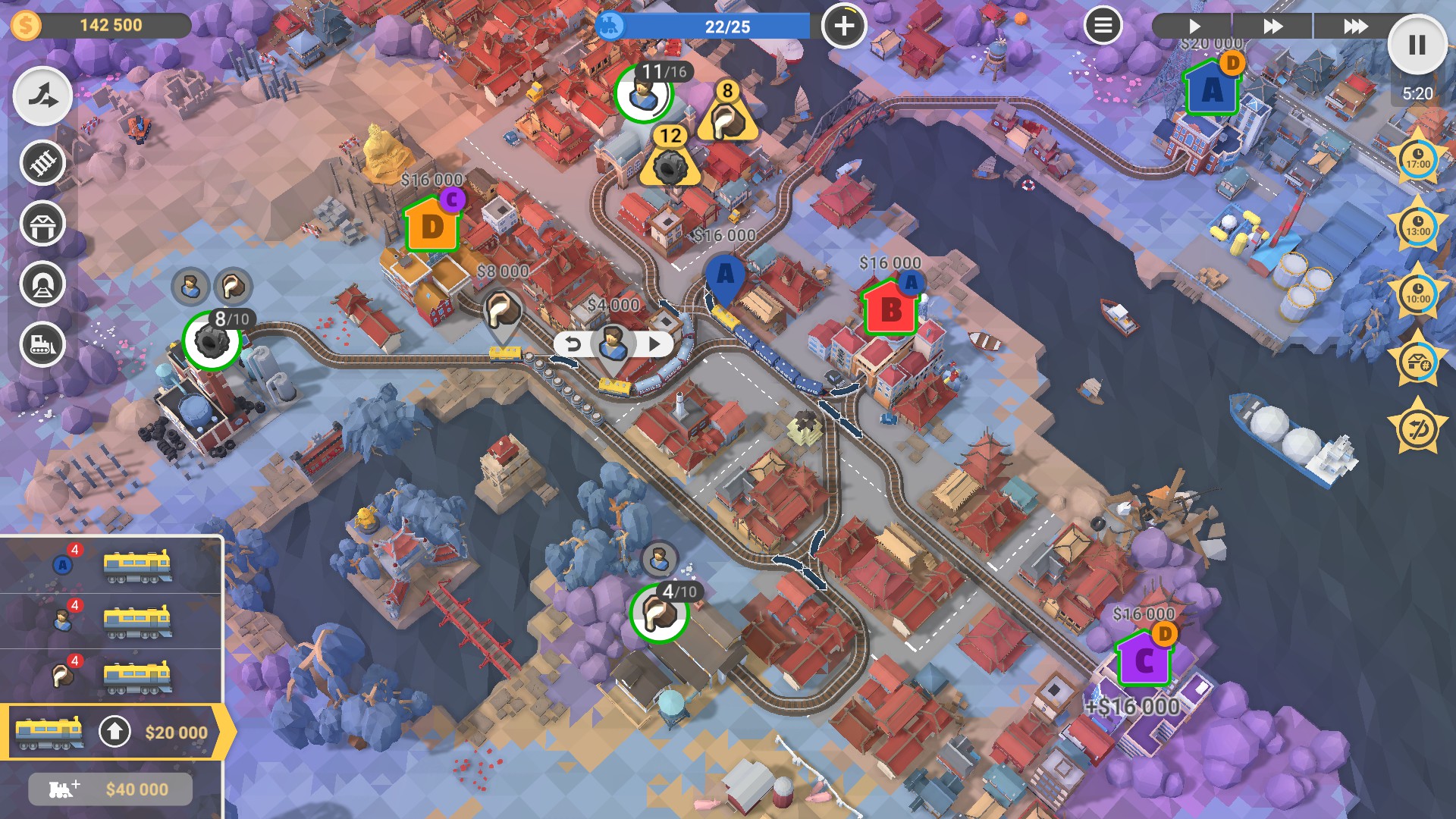
When you get a few missions into the DLC, however, the game reveals its true colors, and shows that this isn’t a throwback to Train Valley 1 after all, it’s just Train Valley 2 with a single Train Valley 1 mechanic stitched Frankenstein-style onto the base game! Now, you have four or so color-coded stations that need trains to be able to go in both directions at any time, while you still have a totally different system where workers need to go to rubber factories and rubber needs to go to tire factories. For some reason, no workers live in any of the color-coded stations, and nobody wants to take a passenger train to the worker-producing town. The game naturally forces some overlap in tracks, but otherwise, these might as well be two totally divorced games you have to play side-by-side.
No easy on-ramp
Whereas Train Valley 1 had to end because there was only so much that could be done with the same base mechanic of needing to connect eight different color-coded stations, Train Valley 2 sought to extend its challenges by adding more and more gimmick mechanics that throw slight complications into the base formula. Power plants need constant supplies of whatever arbitrary supplies they demand (it changes from map to map), and create power lines wherever a train could hypothetically travel. (Apparently, in this world, train barons also build the utility infrastructure, so power isn’t connected to anyplace that doesn’t have a train station connected to a power plant. I’d be more annoyed, but this is also a game where workers take a train to the power plant, but never take one back; Either workers hike across canyons back home, or this world uses people-burning power plants!)
For a DLC that seemingly tries to extend an olive branch to players who liked the first game more than the second, it seems odd that the DLC missions implicitly see themselves as missions 51-70 of the base game (like the Germany DLC of Train Valley 1 was just more levels for the base game), instead of a totally different campaign. Passenger Flow’s missions quickly jump from the “tutorial missions” that (re)”introduce” the Train Valley 1 mechanics to using the gimmick mechanics of Train Valley 2’s later levels without any kind of tutorial message that informs players who didn’t complete the base game as to what these mechanics are or how to handle them.
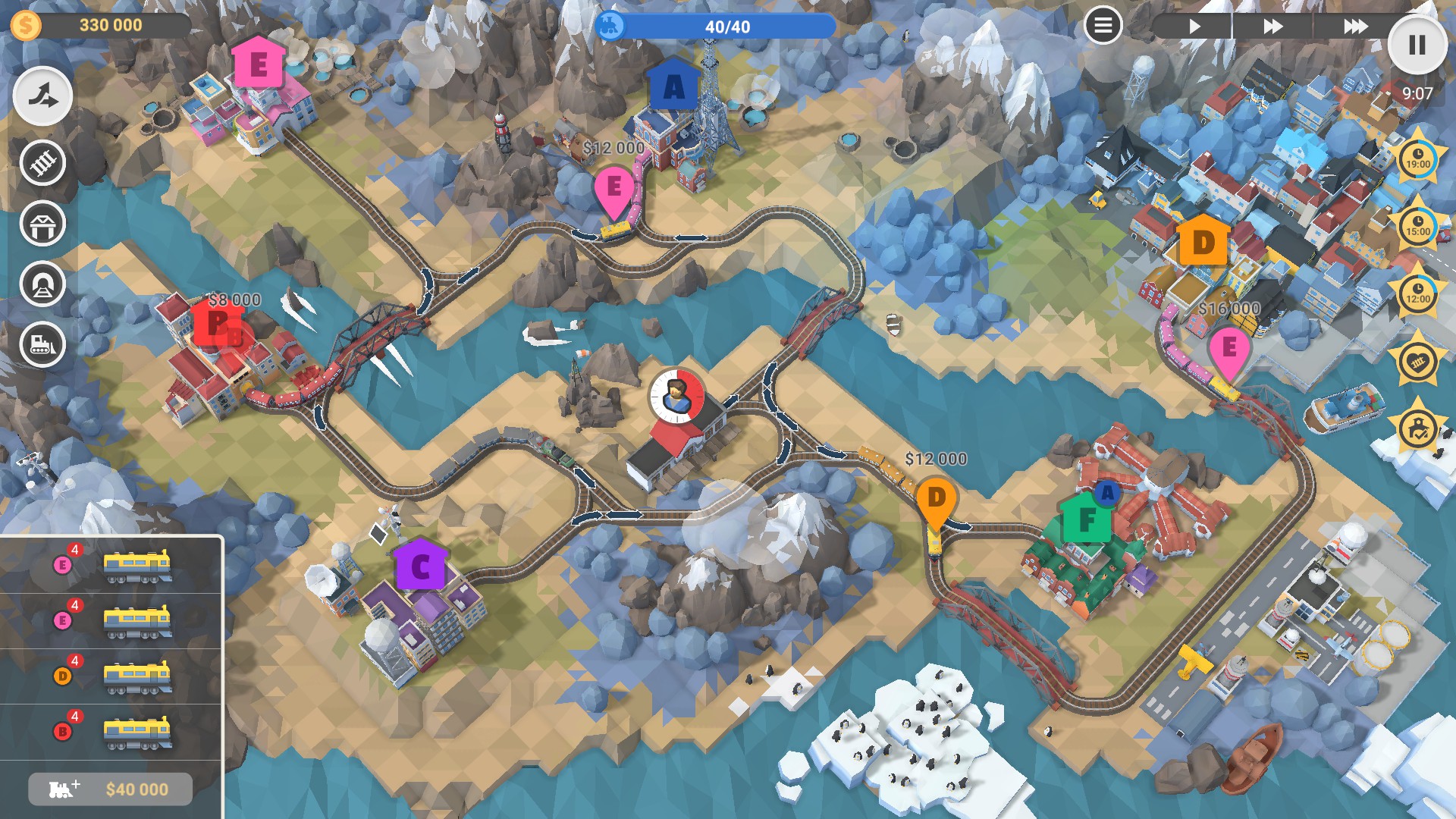
Perhaps the rudest awakening came with one of the earliest missions featuring mechanics beyond the earliest Train Valley 2 mechanics, Mission 5 – Ushuaia, where the map features a pre-built looping track around a station that produces workers, yet no factories to send these workers. (This is also a map where D station is so far away and expensive to connect that it spawning early forces restarts.) At first, I ignored the filling wheel, thinking it was just some sort of decorative element because I didn’t see a use for a worker-producing station in a map with no demand for workers, but then that led to one of my trains suddenly exploding for seemingly no reason when the worker station sent out a train with no warning, immediately colliding with the train that was passing by. So after restarting, I figured out that the station’s wheel was a countdown to a train that was going to depart when the wheel filled up, but without any stations that demand workers, I was stumped. I wound up sending the train to one of the closer color-coded stations, but the train rejected that destination and bounced back out. Finally, having no other choice, I tried the most bizarre and alien of options, and sent the train right back to the station it departed from… and that worked. In what world are we supposed to just assume that the game is asking us to send a train on a big loop before returning to the station it departed from when nothing else in the game works that way, and there’s no indication of this change in the rules?! (Stations normally reject any train that they do not explicitly accept as a requirement for making products or completing the level.) It turns out this is basically the equivalent of the uncontrollable trains from off-map from Train Valley 1, but unlike Train Valley 1’s uncontrollable trains, which either played by the same mechanics as everything else by needing to go to a color-coded station, or else simply starting off-map and going to a destination off-map on different tracks you could not connect to, this new ouroboros-like demand to send a train back to its origin has zero indication how to react to it when it appears.
Other mechanics, I must assume are from parts of Train Valley 2’s base game I didn’t enjoy the game enough to get to before reviewing this DLC include the likes of power plants, which give power to other factories, but only for as long as their workers or whatever else the power plant requires last (before presumably the workers are all burned to death). Essentially, unlike other raw materials that can sit at their factory forever waiting for everything needed to manufacture a product to arrive, electricity “goes bad” after the raw material is consumed, and it is consumed constantly until depleted, creating a demand for either timely deliveries or extra trains to supply the raw materials demanded by the power plants. Power plants also only deliver power to places a train could reach when departing from a power plant, even if you never have a reason to send a train from a power plant, creating a weird extra hoop to jump through.
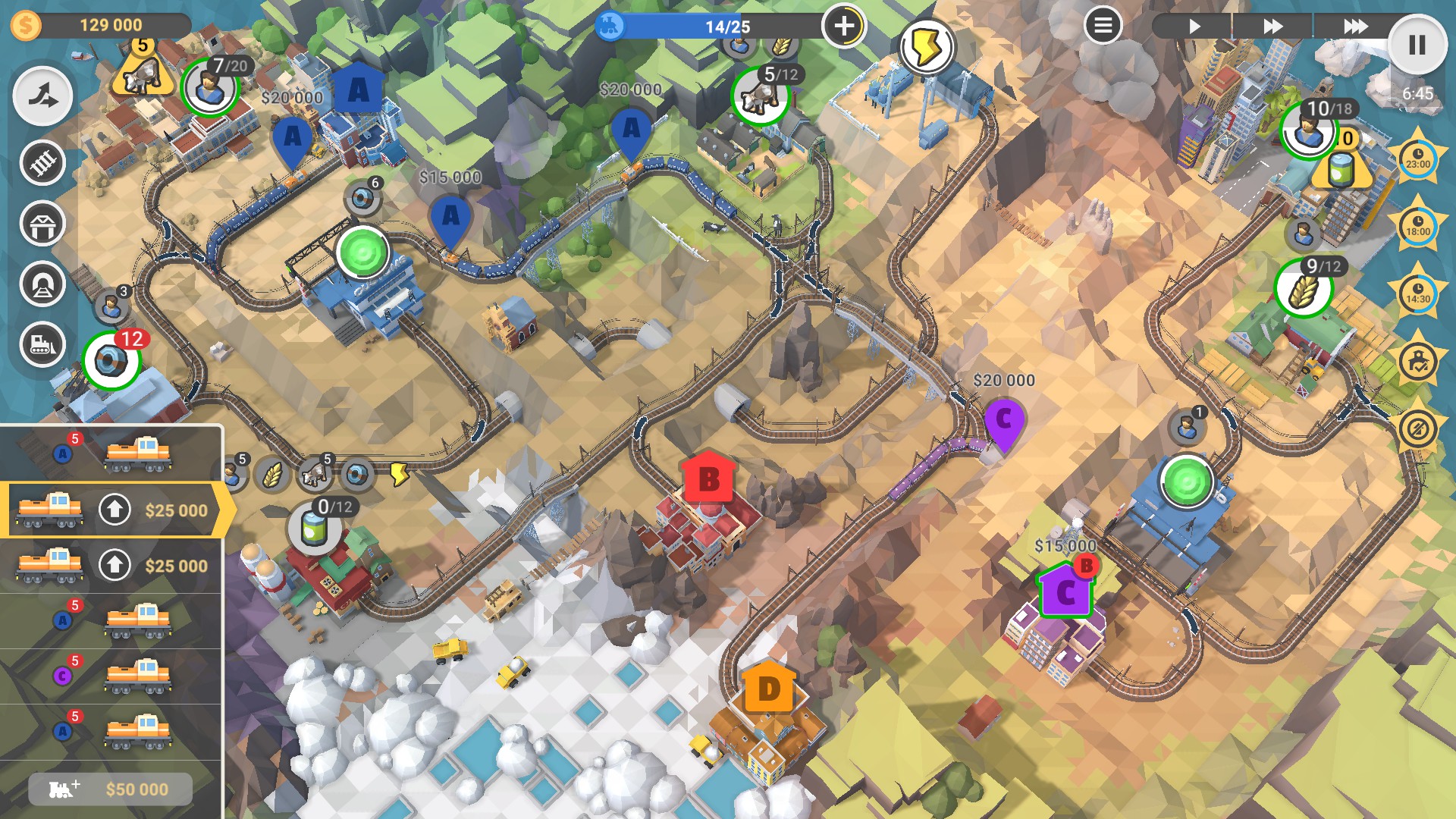
Customs, like the one in the image featured above, are an even more annoying extension of the same principle, as while a power plant running out of raw materials will simply stop production until power is restored, customs will actually detonate any train not fully through customs by the time that it runs out of its raw materials (which oddly, can be nothing but washers). Apparently, a customs office whose employees go on break are required by union rules to karate-chop through passenger trains with their swing gates before they leave. (It makes you wonder why people are so willing to travel on passenger trains that occasionally get detonated for such arbitrary reasons. One would expect trains exploding and killing everyone aboard to have more of an impact on the desirability of train travel than just demanding the company in question buy another train and have to deliver one more batch of passengers to “make up” for all the people that died.)
Verdict
If you already own Train Valley 2, and can still stand to play more, there’s no reason not to buy this, as it certainly doesn’t make things worse, but there’s only so much a DLC can do to patch up the glaring inconsistencies in the game’s fundamental design. The problems with this DLC are the problems with the base Train Valley 2, so if you’re going to hate it, you probably already hated the base game, and weren’t looking for any more of that, anyway. The promise that this is a return to Train Valley 1 are ultimately a hollow one, and this is, like the Germany DLC in the previous game, honestly best saved as a “more of the same” for people who already enjoyed Train Valley 2, even if that’s already a more niche audience than existed for Train Valley 1.

